

Injection molding and extrusion molding are two popular processes used in the manufacturing of custom plastic parts. The key difference between these methods lies in the way the plastic material is shaped and formed. Injection molding involves the use of an injection mold, while extrusion molding employs an extrusion die.
In injection molding, the plastics manufacturer carefully plans and designs the injection mold to create the desired shape and form of the part. The process starts by selecting the appropriate material for the application and considering factors such as material properties and production requirements. The injection mold is then used to inject molten plastic into the mold cavity, allowing it to cool and solidify, ultimately producing the custom plastic part. This process is highly repeatable and enables the production of complex shapes and intricate details with a high level of precision. Injection molding is commonly used in various industries, including industrial, commercial, and medical, where the creation of precise and carefully crafted parts is crucial.
The Distinction between Extrusion and Injection Molding
Extrusion and injection molding are two distinct methods used in the production of plastic parts. These processes differ in terms of their capabilities, production methods, and overall cost and time efficiency.
Extrusion, a continuous and linear process, is suitable for creating two-dimensional profiles. It involves pushing molten plastic material through a die to shape it into a continuous form with a consistent cross-section. This method offers compatibility with various materials and allows for precise control over the dimensions of the extruded product. It is particularly advantageous for applications where strength and overall cost efficiency are essential factors. With its continuous production capabilities, extrusion molding is commonly used to manufacture plastic parts such as pipes, tubes, and profiles. The process is known for its reliability, precision, and ability to produce high volumes of consistent parts in a time-efficient manner.
On the other hand, injection molding is a three-dimensional process that excels at creating complex and intricate parts. It involves injecting molten plastic into a mold cavity under high pressure, resulting in the formation of three-dimensional plastic components. Injection molding offers parallel line capabilities, allowing for the simultaneous production of multiple parts in a single cycle. This method is widely employed in various industries due to its versatility, precision, and high production rates. It ensures the creation of durable plastic parts with exceptional strength and dimensional accuracy. Although injection molding may require higher initial tooling costs, its overall time and cost efficiency make it a preferred choice for large-scale production processes.
Material Fluidity: Key Factor in Manufacturing Processes
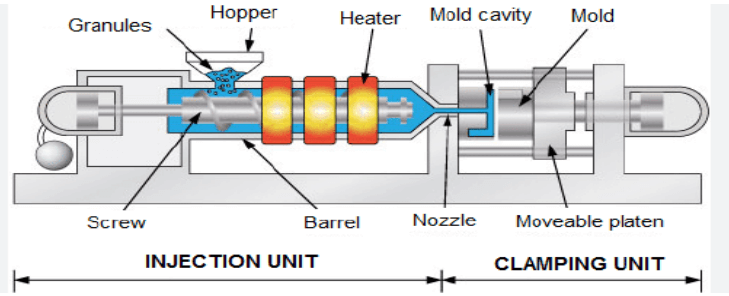
Material fluidity plays a crucial role in various manufacturing processes, including custom injection molding and extrusion. It is especially important when producing thin-walled products or large components that require stringent material flow requirements.
In custom injection molding, material fluidity is a key factor in ensuring the successful formation of complex and precise parts. The ability of the material to flow smoothly within the mold is essential, particularly when manufacturing thin-walled products that demand high levels of fluidity. Likewise, when producing large products, the material must exhibit excellent flow properties to fill the mold cavity completely and uniformly. By carefully selecting materials with the appropriate fluidity characteristics, manufacturers can achieve exceptional results in injection molding processes, meeting the open-ended requirements of various industries such as automotive, medical, and consumer goods. Furthermore, resistance to die reversal is vital to maintain consistent and reliable manufacturing operations, reducing defects and ensuring high-quality end products.
Similarly, in plastic extrusion, material fluidity is of utmost importance. The molten plastic must have the right flow properties to pass through the extrusion die smoothly, resulting in the desired shape and dimensions of the extruded product. This is particularly critical for industries that require stringent tolerances and consistent quality in their extruded components. The ability of the material to flow efficiently and evenly during the extrusion process is essential for achieving high production rates and reducing waste. Manufacturers carefully consider the fluidity characteristics of plastics to optimize the extrusion process and ensure the successful production of a wide range of products, from simple profiles to complex profiles with intricate details.
Melt Strength: A Critical Property for Molding Operations
Melt strength is a critical property for molding operations, particularly in injection molding and plastic extrusion molding processes. It refers to the ability of a molten material to resist deformation under mechanical stress. The melt strength requirement is influenced by various factors, including the geometrical limitations of the die and the composition of the molded material.
In injection molding, the molten material is forced into a die through a mouth die. The die is designed to shape the material into a well-formed product. To ensure the desired shape is maintained, the melt strength of the material must be high enough to withstand the forces exerted during the molding process. If the melt strength is too low, the material may not retain its shape, resulting in defects or limitations in the final product.
Similarly, in plastic extrusion molding, the molten material is pushed through the exit of the die using an extrusion method. The material needs to have sufficient melt strength to be pulled through the die and maintain its shape in the subsequent free state processing, such as thermoforming or hollow blow molding. The ability of the material to stretch without breaking is crucial for achieving well-formed products with the desired dimensions.
Outlet Expansion: Understanding the Variations in Molding Techniques
Outlet expansion in the field of molding techniques encompasses various methods such as injection molding, extrusion molding, blow molding, and blister molding. Each technique has its own set of strict requirements and necessitates careful control to achieve desired outcomes. The viscoelasticity of injection molding materials and extrusion materials plays a crucial role in determining the ways in which plastics are molded.
Injection molding and extrusion molding are two commonly employed processes that differ in principle and execution. Injection molding involves several stages, beginning with the melting and plasticizing stage where the material is liquefied. It then progresses to the flow stage, where the molten material is injected into the mold. The subsequent stages include curing and cooling, resulting in the solidification of the plastic. On the other hand, extrusion molding primarily focuses on the continuous flow of the material through a die, shaping it into a desired form. This method offers its own advantages and is particularly valuable for plastic parts manufacturers.
Blow molding and blister molding are additional methods utilized in the molding industry. While blow molding employs air pressure to expand the plastic into the desired shape, blister molding employs a preheated sheet of plastic that is formed by applying pressure. Understanding the variations in these molding techniques and their respective processes is crucial for manufacturers to meet their specific needs and optimize their production capabilities.
An In-Depth Comparison of Extrusion and Injection Molding
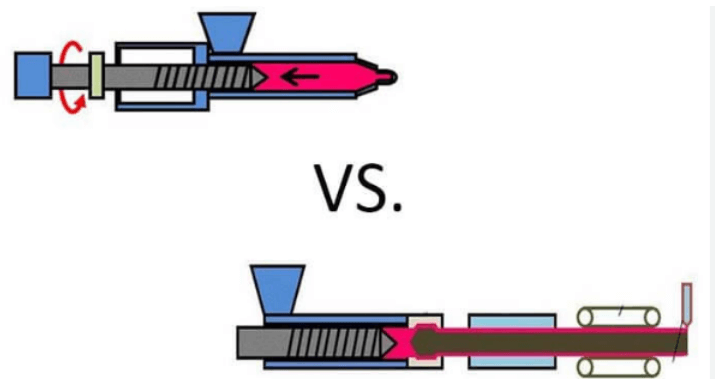
An in-depth comparison of extrusion and injection molding provides valuable insights into these two prominent techniques used in the manufacturing industry. Both methods involve the use of molten materials, but they differ in their die-casting methods. Injection molding utilizes an injection-molding unit that comprises a clamping unit and an injection unit. This process is commonly employed to produce three-dimensional shapes with high precision.
Extrusion, on the other hand, is a continuous process that enables the production of linear or two-dimensional forms. It involves the extrusion of molten material through a die to create a desired shape. While injection molding is well-suited for manufacturing complex three-dimensional components, extrusion offers advantages in producing continuous lengths of materials with consistent cross-sectional profiles.
A. Varied Tools for Different Processes
Injection molding and extrusion molding are two significant processes in the manufacturing industry. The injection molding machine is the main tool used in injection molding, while extrusion molding involves the use of a non-rubber extruder.
The injection molding machine plays a crucial role in the injection molding process, enabling the creation of various plastic products. It utilizes advanced mechanisms and precise control systems to inject molten material into a mold and solidify it into the desired shape. This method is widely employed for its efficiency, accuracy, and ability to produce intricate and complex parts.
In contrast, extrusion molding relies on a non-rubber extruder to shape materials. The extruder applies pressure to the molten material, forcing it through a die to create continuous profiles of a specific cross-sectional shape. This process is commonly used for manufacturing products such as pipes, tubes, and profiles with consistent dimensions and excellent surface finish.
B. Dissimilarities in Process Execution
When it comes to process execution, injection molding and extrusion molding showcase distinct dissimilarities. Injection molding entails the utilization of an injection molding machine equipped with a heated barrel, a plunger, and a reciprocating screw. The plastic material is plasticized and heated within the barrel, after which it is injected into a closed mold cavity. This process allows for the creation of intricate and precise products with exceptional quality.
On the other hand, extrusion molding is a plastic processing method that focuses on the production of continuous profiles. Molten plastic is fed into an extrusion machine, where it is shaped through a die to form the desired profile. Unlike injection molding, extrusion molding does not require a closed mold and is often employed for creating long and uniform products. This method offers cost-effective production for items such as pipes, tubes, and sheets.
The dissimilarities between injection molding and extrusion molding are evident in their execution processes. While injection molding caters to the production of intricate and high-precision products, extrusion molding excels in manufacturing continuous profiles. Manufacturers can leverage these diverse techniques to meet specific requirements in various industries, including automotive, construction, and packaging. The dissimilarities between these two methods allow for flexibility and adaptability in addressing different manufacturing needs, ultimately leading to the development of innovative and high-quality plastic products.
Exploring the Fundamentals of Injection Molding
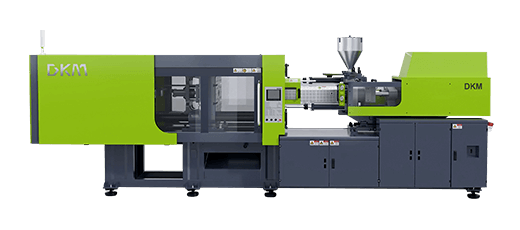
Dakumar Injection molding is a versatile and efficient process used to shape plastic resin into various products. The process begins with plastic pellets being fed into a hopper and then transferred to the feed section of the injection machine. The plastic is then compressed and heated in the compression section, resulting in the plastic being plasticized and transformed into a molten form. Frictional heat generated by the reciprocating screw further enhances the molten plastic's flow properties.
Once in its molten form, the plastic is injected into a mold cavity through the use of a plunger and a screw. The mold, typically made of metal, is designed to shape the plastic into the desired product. The injection machine applies precise dimensions and exerts sufficient thrust to ensure proper filling of the mold cavity. To achieve optimal results, inserts can be incorporated into the mold to enhance functionality or aesthetics.
Injection molding is compatible with a wide range of thermoplastics, thermoset plastics, and even phenolic plastics. The choice of material depends on the specific requirements of the product being manufactured. The molten plastic is cooled within the mold, allowing it to solidify and take the shape defined by the mold cavity. The closed mold ensures that the plastic retains its shape during the cooling process, resulting in the production of high-quality and dimensionally accurate products.
The Step-by-Step Injection Molding Process
The injection molding process is based on the principle of melting solid plastic and injecting it into a cavity within a specially designed mold. The process begins by preparing the mold, which involves manufacturing the mold structure and creating the necessary cooling waterways. The mold is designed to accommodate the desired product and is made from materials suitable for handling thermoplastics or thermosetting plastics.
Once the mold preparation is complete, the injection machine is set up and ready for operation. The plastic material, in its solid form, is heated to its melting point within the machine. The molten plastic is then injected into the mold cavity at a controlled speed and pressure, ensuring proper filling of the cavity and achieving the desired shape of the product. After the injection process, the mold is allowed to cool, facilitating the solidification of the plastic. The cooling process is carefully managed to ensure optimal product quality and dimensional accuracy. Finally, post-processing steps may be performed, such as trimming excess material or adding finishing touches, to produce high-quality plastic products.
1. Pre-Molding Preparation: Setting the Stage
Pre-molding preparation plays a vital role in the plastic injection molding manufacturing process, ensuring the production of high-quality products. It involves several important steps to optimize the quality and efficiency of the manufacturing process. One crucial aspect is the pretreatment of the raw material, which involves carefully handling and preparing the plastic material before it is introduced into the injection molding machine. This includes activities such as cleaning the barrel to remove any residue from previous runs and preheating inserts to facilitate proper adhesion and material flow.
Another key consideration in pre-molding preparation is selecting an appropriate release agent. This agent helps to ensure easy and efficient ejection of the molded product from the mold cavity. The release agent provides a protective layer and reduces the chances of damage or defects during the ejection process. Additionally, maintaining a continuous production process is essential to maximize productivity and minimize downtime. This includes streamlining material handling, optimizing mold changes, and establishing efficient quality control measures throughout the manufacturing process.
2. Injection Process: Introducing the Molten Material
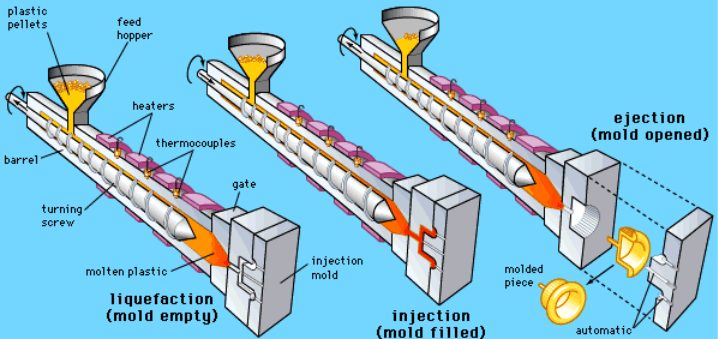
The injection process is a critical stage in plastic injection molding, where the molten material is introduced into the mold cavity. This process involves plasticizing the material, which includes heating and melting the plastic to a fluid state suitable for injection. The molten material is then injected into the mold cavity under high pressure, ensuring precise placement and filling. Once injected, the material begins to cool and solidify, taking the shape of the mold cavity. This cooling process is carefully controlled to achieve optimal part quality and dimensional accuracy. After the material has sufficiently cooled, the demolding process takes place, where the mold opens, and the solidified part is ejected.
In the charging stage of the injection process, precise material loading is crucial for achieving high-quality manufacturing of plastic parts. This involves quantitatively adding the material to the injection molding machine in a constant volume manner. Stable operation is maintained to ensure uniform plasticization of the material, which is essential for consistent and reliable molding results. By carefully controlling the charging process, manufacturers can optimize the injection molding service, resulting in the production of high-quality plastic parts.
Optimizing the charging process in plastic injection molding is crucial for achieving high-quality plastic parts manufacturing. As a plastic injection molding service, it is essential to carefully manage the material intake in a quantitative and constant volume manner. By ensuring a stable operation and uniform plasticization, the charging process plays a significant role in obtaining superior results.
The charging process is particularly important in an intermittent process like plastic injection molding. It involves adding the material in a precise and controlled manner to maintain consistent volumes throughout the operation. This approach enables stable and reliable performance, minimizing variations and ensuring uniform plasticization. By optimizing the charging process, manufacturers can enhance the overall efficiency of their operations and deliver high-quality plastic parts that meet the highest standards of manufacturing.
4. Plasticizing: Transforming the Raw Material
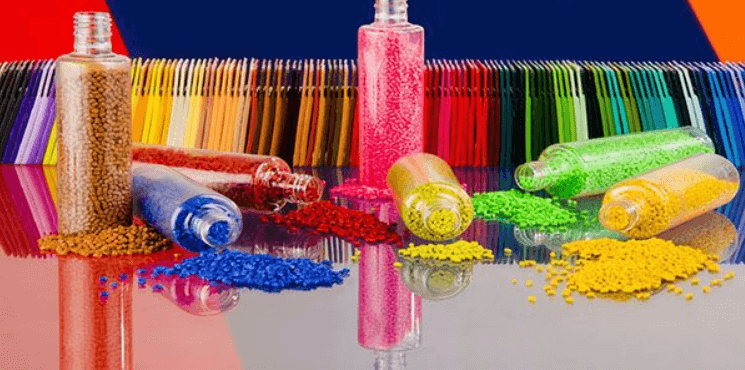
Plasticizing is a crucial step in the injection molding process that involves transforming the raw material into a continuous and homogenized melt. The process begins with the introduction of the molding material into the barrel of the injection molding machine. The material can be in the form of loose powder or granular solids. Inside the barrel, the material undergoes a series of actions to undergo its transformation.
First, the material is heated within the barrel to a specific temperature. This heat allows the material to become more pliable and malleable for processing. Next, the material is compacted and mixed within the barrel, ensuring that it achieves a consistent and uniform composition. This compaction and mixing process further enhance the plasticizing of the material. As a result, the loose powder or granular solid gradually transforms into a continuous and homogenized melt.
5. Injection: Filling the Mold Cavity
The injection process involves filling the mold cavity with the plasticized plastic melt through a series of stages. It starts with the plunger and screw in the injection cylinder being in the metering position. The barrel of the injection molding machine maintains high pressure to facilitate the flow of the plastic melt. When the injection stage begins, the piston pushes the plasticized plastic melt through the nozzle and into the mold. The mold, comprising the pouring system and closed mold cavity, receives the injected material, ensuring proper filling and shaping.
During the injection process, the injection unit performs several important functions. It controls the stages of flow filling and pressure retaining to achieve optimal part quality. The injection unit also considers factors such as shrinkage and backflow, which may affect the final product. By carefully managing these variables, the plastic injection molding manufacturing process can produce high-quality parts with precision and consistency.
6. Cooling: Solidification and Shaping
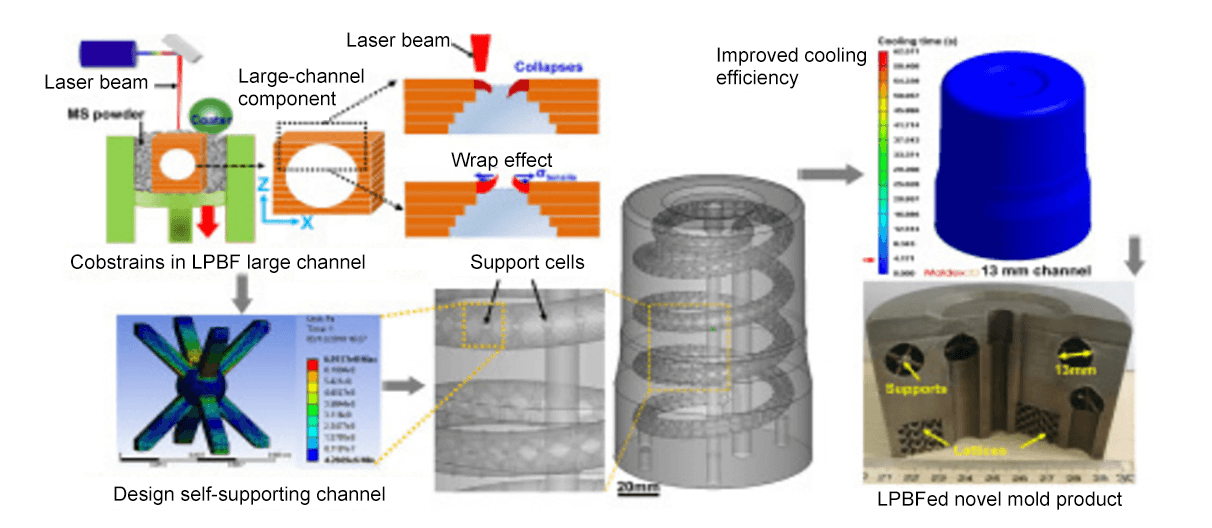
The cooling process in plastic injection molding is crucial for the solidification and shaping of the plastic material. After the plastic has been injected into the mold cavity through the pouring system, the cooling phase begins. The mold, consisting of the cavity and other components, plays a vital role in facilitating the cooling process. Cooling media such as water, oil, or air is introduced to the mold to cool the molten plastic.
During the cooling period, the plastic gradually solidifies and takes on the desired shape defined by the mold cavity. This frozen state allows the material to maintain its form and dimensional accuracy. The pressure-holding stage ensures that the plastic remains in contact with the mold walls during the cooling process, promoting proper cooling and reducing the risk of defects. Once the cooling process is complete and the plastic has solidified, the demolding process takes place, where the solidified part is unloaded from the mold.
7. Demolding: Extracting the Finished Product
Demolding is a crucial step in the plastic injection molding process, as it involves extracting the finished plastic part from the mold. Once the plastic part has cooled to a certain temperature, the mold opens, and a pushing mechanism is activated to release the part. This action is carefully executed by the pushing mechanism, which applies the necessary force to push the part out of the mold cavity.
The temperature of the mold plays a vital role in demolding. Cooling the plastic part to a specific temperature allows it to solidify and retain its shape. Once the part has reached the desired temperature, the mold opens, and the pushing mechanism comes into action. The pushing mechanism applies the necessary force to eject the plastic part from the mold, ensuring a successful and efficient demolding process.
8. Post-Processing of Products: Adding Finishing Touches
Post-processing of products plays a vital role in adding finishing touches to molded parts, addressing factors such as residual stress, color, performance, and size. One common post-processing technique is annealing, which helps eliminate residual stress in the molded part. Annealing involves subjecting the part to controlled heat treatment, which helps stabilize its structure and reduce internal stress. This process improves the overall performance and dimensional stability of the part, ensuring its long-term reliability.
Another post-processing method is humidification, which can be used to enhance the color and performance of the molded part. Humidification involves exposing the part to a controlled humid environment, which can have beneficial effects on the appearance and properties of the part. This process can help improve color uniformity, surface finish, and even the mechanical properties of the part, making it more durable and aesthetically pleasing.
An Insight into Extrusion Molding
Extrusion molding is a highly versatile plastic processing technique that involves the use of a non-rubber extruder, hydraulic press, and die to shape molten material. This processing method, also known as extrusion, allows for the creation of products with constant complex cross-sections. The process begins with the thermoplasticized material being fed into the extruder barrel, where a screw turns and feeds the melted plastic towards the head. The head then shapes the material into desired cross-sections, producing various products or semi-products.
During the extrusion molding process, a polymer material is subjected to pressure within the machine, powered by a motor. The extrusion machine includes a heater to melt the plastic and bring it to a molten state, ready for extrusion. The molten plastic material is then fed into the extruder barrel and undergoes a series of stages, including melting, plasticizing, shaping, and cooling. The plunger and die play crucial roles in maintaining the desired pressure and controlling the flow of the molten material.
The extrusion process offers several advantages in plastic processing. It allows for the production of products with constant complex cross-sections, enabling the creation of intricate designs. The extrusion machine, powered by a motor, provides consistent and efficient processing. By controlling the pressure, temperature, and speed of the extrusion process, manufacturers can achieve precise results. Furthermore, the cooling stage ensures that the shaped plastic retains its form and becomes solid.
Understanding the Two Stages of the Extrusion Process
The extrusion process can be understood in two stages, each contributing to the creation of the desired product. In the first stage, solid plastic is plasticized and prepared for extrusion. The plastic material passes through a specially shaped die under pressure, forming a continuous body with the desired shape and cross-section. This stage involves careful control of temperature, pressure, and other parameters to make sure the plastic loses its solid state and becomes suitable for extrusion. By obtaining the desired shape and cross-section, the first stage sets the foundation for the subsequent steps in the extrusion process.
The second stage of the extrusion process involves the extruded continuum being further processed to achieve the desired product. The plasticity of the extruded material allows for various methods to be employed, depending on the specific requirements. Whether it involves additional shaping, cutting, or other post-extrusion operations, the second stage employs suitable methods to transform the extruded continuum into the final product. This stage is crucial in ensuring the quality, functionality, and aesthetics of the desired product, meeting the expectations of manufacturers and end-users alike.
Classifying Extrusion Molding Techniques
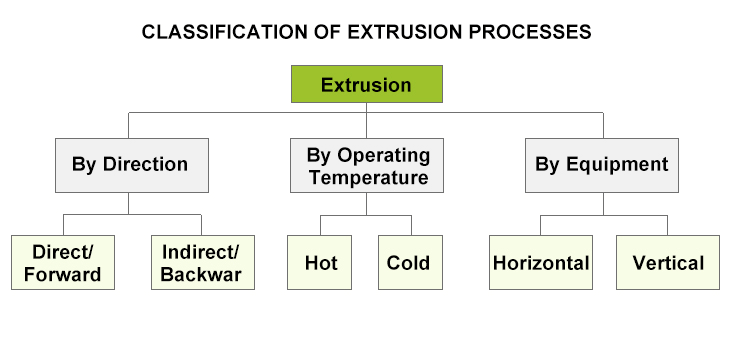
Extrusion molding techniques can be classified into two main categories: the dry method and the wet method. Both methods involve the plasticizing of plastics through heating and melting, followed by pressurization and shaping processes. However, they differ in the cooling and softening mechanisms employed.
In the dry method, the plastic material is heated and melted without the use of any solvent. This division simplifies the extrusion process, avoiding the troublesome solvent removal and recovery stages. The dry method ensures a homogeneous plasticization process, preventing issues such as overheating and maintaining the desired properties of the plastic materials, such as nitrocellulose or cellulose acetate plastics.
On the other hand, the wet method utilizes a solvent to facilitate the plasticizing and shaping processes. While this method may offer certain advantages in specific applications, it also comes with limitations. The presence of a solvent introduces additional complexities, such as the need for solvent removal and recovery, which can be troublesome and time-consuming. Moreover, the use of a solvent may affect the homogeneity of the plasticization process and potentially lead to overheating or degradation of the plastic materials.
FAQs.
The difference between extrusion grade and injection grade lies in their viscosity rates and their respective applications. In injection molding, a high viscosity rate of material is used, whereas in extrusion, a medium viscosity rate is employed. The choice of viscosity rate depends on the specific requirements of the manufacturing process. Extrusion grade materials are formulated to have properties suitable for the extrusion process, while injection grade materials are tailored for injection molding. These grades differ in their flow characteristics, melt temperature ranges, and other properties to ensure optimal performance in their respective applications.
Extrusion is generally considered to be a cheaper option than injection molding, but the cost comparison depends on various factors. The extrusion process has lower upfront costs, particularly in terms of tooling. Tooling costs for extrusion can be 80% to 90% less compared to injection molding. However, over time, the cost of extrusion can become slightly more expensive as it produces parts at a medium cost per part.
The main difference between injection screws and extrusion screws lies in their design, specifically the length of the flighted surface, often referred to as the L/D ratio. In injection molding, screws typically have a common L/D ratio of 20:1, which means that the length of the flighted surface is twenty times the diameter of the screw. On the other hand, extruder screws are designed with a standard L/D ratio of 24:1. It is worth noting that many extruder screws have even higher ratios, such as 30:1 or more.
Extrusion offers several advantages that make it a preferred choice for many applications. One of the key benefits is the ability to create aluminum extrusions with the required strength for most applications. The nature of the extrusion process allows for the concentration of strength precisely where it is needed. This is achieved by incorporating varying wall thicknesses and internal reinforcement in the profile design.
The flexibility in design and the ability to tailor the strength of extrusions to specific requirements make extrusion a versatile and efficient manufacturing method. By strategically adjusting the thickness of the walls and incorporating internal reinforcements, manufacturers can optimize the strength-to-weight ratio of the extruded components. This allows for the creation of strong and lightweight structures that are suitable for a wide range of applications.
